-
This timeline provides an overview of some of key moments, events, policies and practices that help understand how hip hop developed to what it is today. There is more here than will be tested, and there's much that is missing, but it's a broad overview of what's either been mentioned, or has influenced what we've discussed this term.
-
 Redlining, the practice of not offering loans, or favorable rates on loans to those living in or wishing to purchase property in areas deemed " hazardous to investment" began formally in 1935, classifying geographic areas from "A" to "D." Not coincidentally, the majority of the "D" class areas were high in minority populations. While legal restrictions were put in place in 1968 and 1974, the practice continued informally and its impacts on segregated neighborhoods are still felt today.
Redlining, the practice of not offering loans, or favorable rates on loans to those living in or wishing to purchase property in areas deemed " hazardous to investment" began formally in 1935, classifying geographic areas from "A" to "D." Not coincidentally, the majority of the "D" class areas were high in minority populations. While legal restrictions were put in place in 1968 and 1974, the practice continued informally and its impacts on segregated neighborhoods are still felt today. -
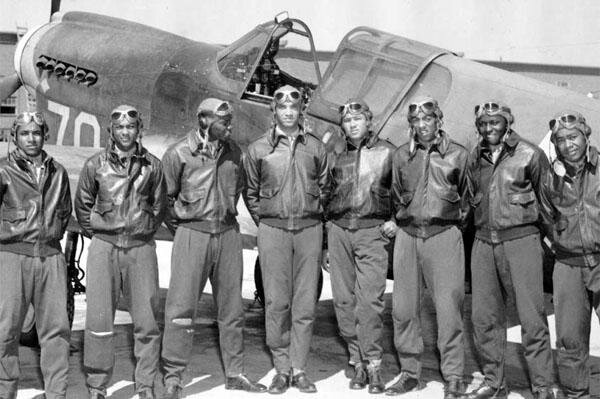 The Tuskegee Airmen were the first African-American pilots to serve in the U.S. military. After rejecting Black pilots who wished to fly in WWI, the Tuskegee Airmen were the product of two decades of Civil Rights supporters.
The Tuskegee Airmen were the first African-American pilots to serve in the U.S. military. After rejecting Black pilots who wished to fly in WWI, the Tuskegee Airmen were the product of two decades of Civil Rights supporters. -
 Dr. Pauli Murray arrested for failing to give up her seat on bus going from NY to Durham, NC.
Dr. Pauli Murray arrested for failing to give up her seat on bus going from NY to Durham, NC. -
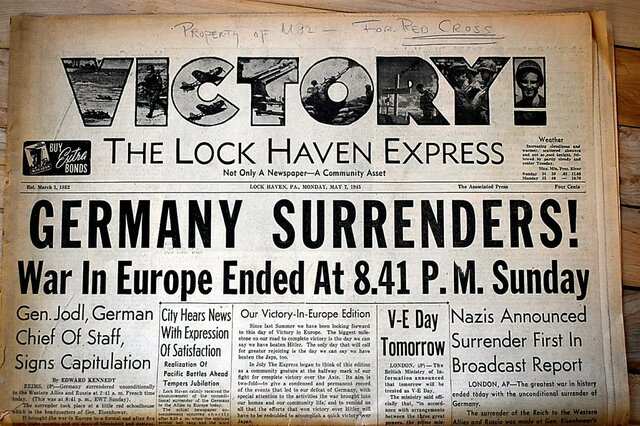 End of WWII: while Germany had surrendered in the Spring, Japan signed an updated peace treaty on 2 SEP, 1945.
End of WWII: while Germany had surrendered in the Spring, Japan signed an updated peace treaty on 2 SEP, 1945. -
 Construction for the The Cross Bronx Expressway begins. It was the brainchild of Robert Moses in the 40's and went up through the 50's and 60's.
Construction for the The Cross Bronx Expressway begins. It was the brainchild of Robert Moses in the 40's and went up through the 50's and 60's. -
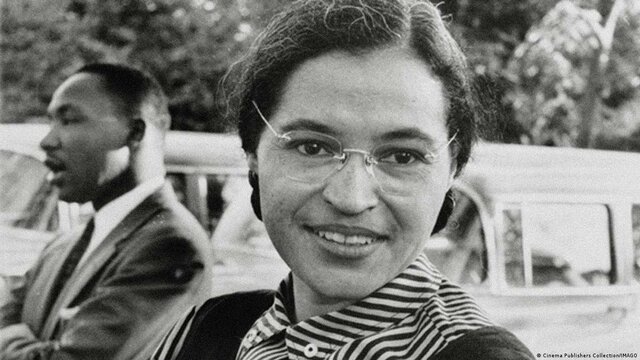 Rosa Parks arrested for refusing to give up her seat on bus.
Rosa Parks arrested for refusing to give up her seat on bus. -
 The Little Rock Nine were nine African-American children who enrolled in the all white Little Rock Central High School in Arkansas in 1957. Initially prevented from entering, President Eisenhower intervened.
The Little Rock Nine were nine African-American children who enrolled in the all white Little Rock Central High School in Arkansas in 1957. Initially prevented from entering, President Eisenhower intervened. -
 René Girard publishes Deceit, Desire & the Novel, where he first describes mimetic desire: the mechanism, he contends is responsible not only for individual desires, but also rivalry. According to René Girard, we desire things we believe will associate us with those we admire. They become the mediators of our desires.
René Girard publishes Deceit, Desire & the Novel, where he first describes mimetic desire: the mechanism, he contends is responsible not only for individual desires, but also rivalry. According to René Girard, we desire things we believe will associate us with those we admire. They become the mediators of our desires. -
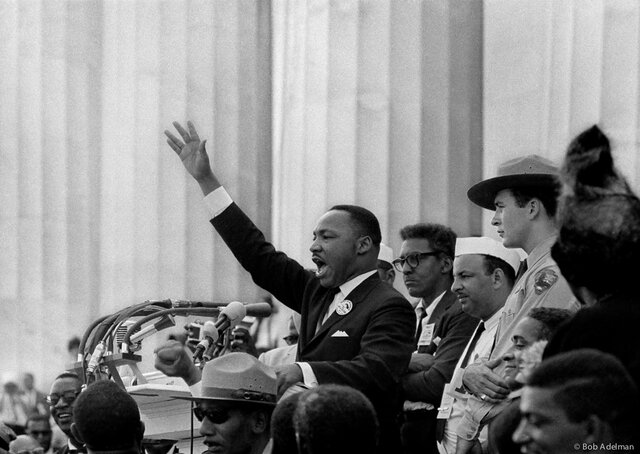 The March on Washington was a march organized as part of the Civil Rights Movement to advocate for better jobs and fair pay for African Americans. Roughly 1/4 million people marched on Washington for Black rights. This was the event where Dr. King gave his famous "I have a Dream" speech.
The March on Washington was a march organized as part of the Civil Rights Movement to advocate for better jobs and fair pay for African Americans. Roughly 1/4 million people marched on Washington for Black rights. This was the event where Dr. King gave his famous "I have a Dream" speech. -
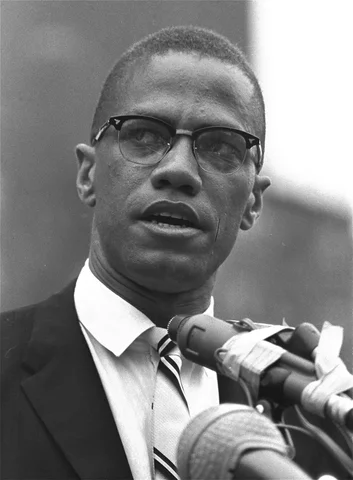 Malcolm X was a prominent civil rights leader and human rights activist. He pushed to have the Nation of Islam to enter the Civil Rights Movement, he pushed for the use of terms like "Black" and "Afro-American" to replace the then-common terms, "negro" and "colored." His life was documented in Alex Haley's The Autobiography of Malcolm X.
Malcolm X was a prominent civil rights leader and human rights activist. He pushed to have the Nation of Islam to enter the Civil Rights Movement, he pushed for the use of terms like "Black" and "Afro-American" to replace the then-common terms, "negro" and "colored." His life was documented in Alex Haley's The Autobiography of Malcolm X. -
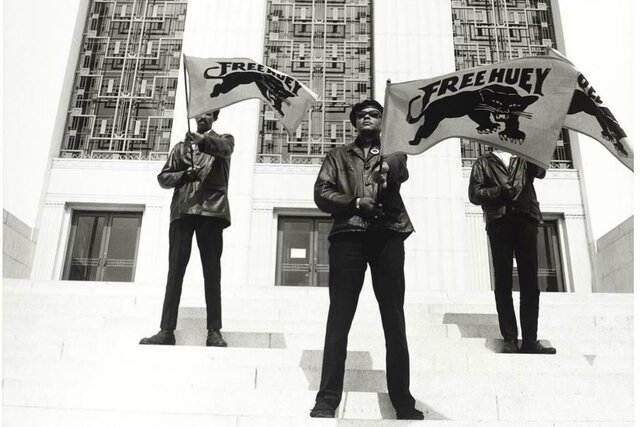 The Black Panther Party was founded in 1966 as a means of self defense and mutual support among black citizens. They provided protection, food, clothing and transportation. Huey Newton and Bobby Seal were unsatisfied with how far the Civil Rights Movement had been able to go and so created the BPP. Huey Newton pushed to include women and LGBTQ+ members in the party.
The Black Panther Party was founded in 1966 as a means of self defense and mutual support among black citizens. They provided protection, food, clothing and transportation. Huey Newton and Bobby Seal were unsatisfied with how far the Civil Rights Movement had been able to go and so created the BPP. Huey Newton pushed to include women and LGBTQ+ members in the party. -
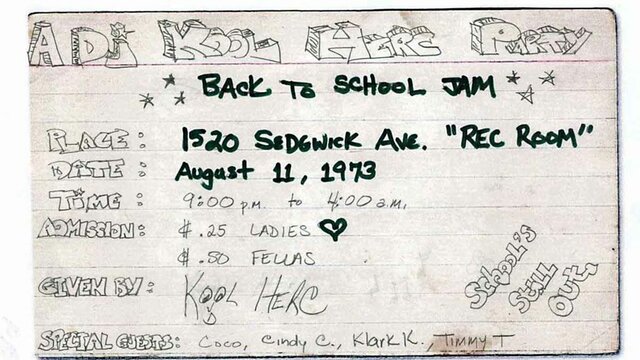 1520 Sedgwick Ave: the address of the broadly accepted first hip hop party. DJ Kool Herc deejayed his sister, Cindy's, back to school party and used his "merry-go-round" technique to keep extend song breaks and therefore keep people dancing. He did it using two identical records and a mixer to go back and forth between them.
1520 Sedgwick Ave: the address of the broadly accepted first hip hop party. DJ Kool Herc deejayed his sister, Cindy's, back to school party and used his "merry-go-round" technique to keep extend song breaks and therefore keep people dancing. He did it using two identical records and a mixer to go back and forth between them. -
 Scratching is a technique involving moving a vinyl record back and forth to create a sound or rhythm. It was often used in the early days to cover any slight miscues in setting up a second record that extended the break. Because it was hard to get records lined up exactly right, a split-second error could be covered by scratching. It became part of turntablism art in its own right early on. DJ Grand Wizzard Theodore pioneered the technique.
Scratching is a technique involving moving a vinyl record back and forth to create a sound or rhythm. It was often used in the early days to cover any slight miscues in setting up a second record that extended the break. Because it was hard to get records lined up exactly right, a split-second error could be covered by scratching. It became part of turntablism art in its own right early on. DJ Grand Wizzard Theodore pioneered the technique. -
In 1979, Kurtis Blow, rapper, singer, songwriter and producer, becomes the first rapper to be signed by a major record label, Mercury Records. His first major hits were Christmas Rapping and The Breaks released in 1979 and 1980, respectively.
-
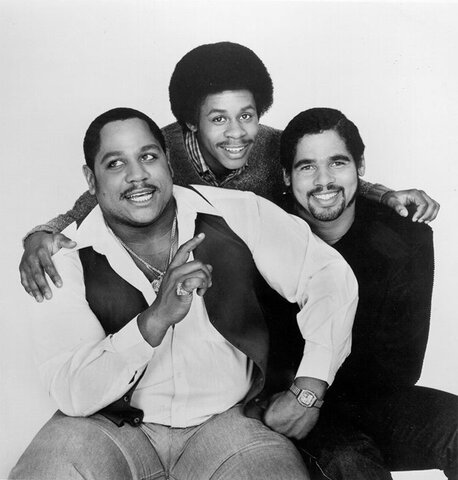 Rapper's Delight, produced by Sylvia Robinson and performed by the Sugarhill Gang is the first commercially released rap song to get national recognition.
Rapper's Delight, produced by Sylvia Robinson and performed by the Sugarhill Gang is the first commercially released rap song to get national recognition. -
 Sampling became standard fare in in the 1980's as technology made it easier and easier to record and manipulate prerecorded (or other) sounds. This brought along many lawsuits, creating new rules and laws guiding who can sample what and how royalties work. Today's samplers make it possible to create tracks without a studio.
Sampling became standard fare in in the 1980's as technology made it easier and easier to record and manipulate prerecorded (or other) sounds. This brought along many lawsuits, creating new rules and laws guiding who can sample what and how royalties work. Today's samplers make it possible to create tracks without a studio. -
 Sha Rock gets national exposure on Saturday Night Live as part of the Funky 4+1. They were the first hip hop group to appear on national television.
Sha Rock gets national exposure on Saturday Night Live as part of the Funky 4+1. They were the first hip hop group to appear on national television. -
 Grandmaster Flash and the Furious Five release what is widely regarded as the first "conscious rap" of national significance, The Message. It had major importance in future performer's pieces. Musicians such as KRS-One, Public Enemy, Queen Latifah, and others regularly cite it was an influence on their approach to hip hop.
Grandmaster Flash and the Furious Five release what is widely regarded as the first "conscious rap" of national significance, The Message. It had major importance in future performer's pieces. Musicians such as KRS-One, Public Enemy, Queen Latifah, and others regularly cite it was an influence on their approach to hip hop. -
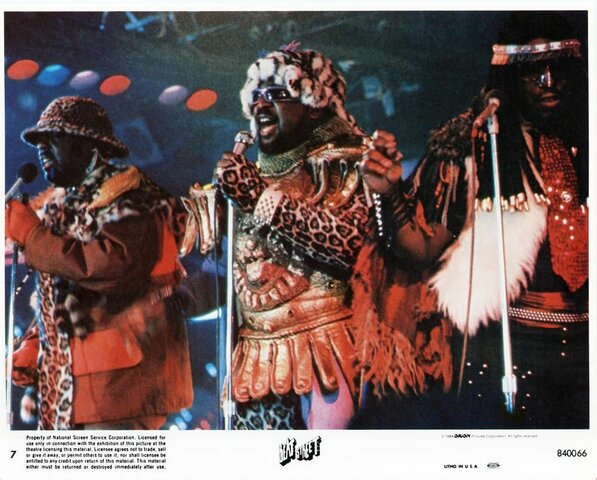 Afrika Bambaataa had been working since the 1970's to recruit musicians, graffiti artists and dancers to use music to come together and use it as an escape from drugs and gang life that were so detrimental to Bronx youth. His early trips around the world were instrumental in planting the global seeds of hip hop.
Afrika Bambaataa had been working since the 1970's to recruit musicians, graffiti artists and dancers to use music to come together and use it as an escape from drugs and gang life that were so detrimental to Bronx youth. His early trips around the world were instrumental in planting the global seeds of hip hop. -
The movie, Wild Style, introduced the U.S. and the world to hip hop style and its four elements. Released in 1983, this low budget movie is seen as a classic and ,although all four elements of hip hop are part of the movie, it focuses on the outlaw nature of graffiti art.
-
The Fat Boys, with their unique brand of beatboxing hit the scene and bring a fun and playful version of hip hop & rap to much of America. The song Stick 'em, produced by Kurtis Blow, got them national attention and landed them Swatch® wristwatch ads on MTV.
-
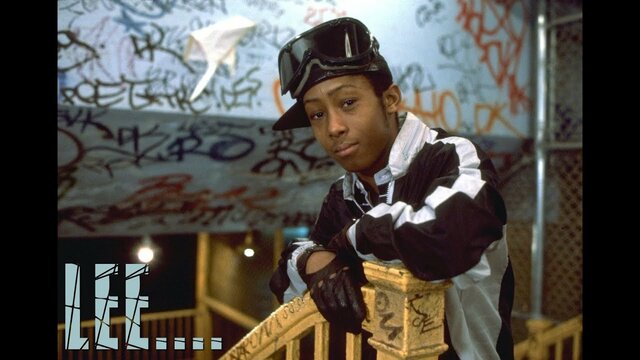 The movie, Beat Street, was released in 1984 and saw significant advances as a movie and in its more balanced representation of hip hop as cultural force, balancing its attention on all four elements of hip hop better than its predecessor, Wild Style had done. The movie shows early moves of South Bronx youth heading out of the birthplace of hip hop and into more uptown clubs as well as the early relationship between hip hop and academic settings.
The movie, Beat Street, was released in 1984 and saw significant advances as a movie and in its more balanced representation of hip hop as cultural force, balancing its attention on all four elements of hip hop better than its predecessor, Wild Style had done. The movie shows early moves of South Bronx youth heading out of the birthplace of hip hop and into more uptown clubs as well as the early relationship between hip hop and academic settings. -
 Although not initially formed exclusively for hip hop bands, Def Jam Recordings has been solidly representing the hip hop side of the music industry for roughly 40 years, representing artists such as Jay-Z, DMX, Rihanna and many more.
Although not initially formed exclusively for hip hop bands, Def Jam Recordings has been solidly representing the hip hop side of the music industry for roughly 40 years, representing artists such as Jay-Z, DMX, Rihanna and many more. -
 In 1984, feminist author, scholar and theoretician, bell hooks released her book From Margin to Center, which used as its main lens, the concept of center/margin to better understand the relationship of those at the center(s) of power to those at the periphery, or, margins, of power in society.
In 1984, feminist author, scholar and theoretician, bell hooks released her book From Margin to Center, which used as its main lens, the concept of center/margin to better understand the relationship of those at the center(s) of power to those at the periphery, or, margins, of power in society. -
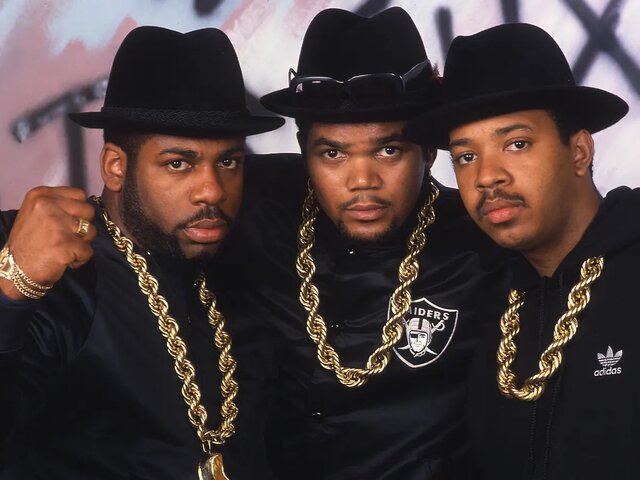 Following their Gold and Platinum releases, "Run-DMC" and "King of Rock" (respectively), their 1986 "Raising Hell" went multiplatinum in part due to their collaboration with rock band Aerosmith. In 2007, the Hollis, Queens group was named the Greatest Hip Hop Group of All Time by MTV and the Greatest Hip Hop Artist of All Time by VH-1. They were the 2nd hip hop group inducted into the Rock & Roll Hall of Fame.
Following their Gold and Platinum releases, "Run-DMC" and "King of Rock" (respectively), their 1986 "Raising Hell" went multiplatinum in part due to their collaboration with rock band Aerosmith. In 2007, the Hollis, Queens group was named the Greatest Hip Hop Group of All Time by MTV and the Greatest Hip Hop Artist of All Time by VH-1. They were the 2nd hip hop group inducted into the Rock & Roll Hall of Fame. -
 Salt n Pepa's debut album, "Hot, Cold & Vicious" sold over 1 million copies, making Salt n Pepa (with their DJ Spinderella), the first female hip hop group to go gold and platinum.
Salt n Pepa's debut album, "Hot, Cold & Vicious" sold over 1 million copies, making Salt n Pepa (with their DJ Spinderella), the first female hip hop group to go gold and platinum. -
 The Beastie Boys came on the scene in 1986 and are among those artists that we won't do much with, since they're not really rappers with a message, that is, they're not representative of "conscious rap" so much as they are of "party rap" and a whole rebellious vibe. Still, they made an impact and I thought I'd put them in here.
The Beastie Boys came on the scene in 1986 and are among those artists that we won't do much with, since they're not really rappers with a message, that is, they're not representative of "conscious rap" so much as they are of "party rap" and a whole rebellious vibe. Still, they made an impact and I thought I'd put them in here. -
 Public Enemy, which first formed in 1985 released their first album, "Yo! Bum Rush the Show" in 1987. Their next two releases, "It Takes a Nation of Millions to Hold Us Back" and "Fear of a Black Planet" would define the next generation of politically and socially conscious rappers. They spoke out against racism and the U.S. media portrayal of Black Americans. Their logo is a rapper in the crosshairs of a gun.
Public Enemy, which first formed in 1985 released their first album, "Yo! Bum Rush the Show" in 1987. Their next two releases, "It Takes a Nation of Millions to Hold Us Back" and "Fear of a Black Planet" would define the next generation of politically and socially conscious rappers. They spoke out against racism and the U.S. media portrayal of Black Americans. Their logo is a rapper in the crosshairs of a gun. -
 MTV premiers the first nationally televised rap music program in 1988 (one year after beginning on MTV Europe). The show was hosted by Fab 5 Freddy and the U.S. version of the show followed Europe's lead in bringing guests such as Afrika Bambaataa, L.L. Cool J, De La Sol, Erik B & Rakim, Salt n Pepa, among others, to televisions across the country. Censorship proved to be a contentious issue with MTV and the hip hop community.
MTV premiers the first nationally televised rap music program in 1988 (one year after beginning on MTV Europe). The show was hosted by Fab 5 Freddy and the U.S. version of the show followed Europe's lead in bringing guests such as Afrika Bambaataa, L.L. Cool J, De La Sol, Erik B & Rakim, Salt n Pepa, among others, to televisions across the country. Censorship proved to be a contentious issue with MTV and the hip hop community. -
 The Source magazine is the world's longest running hip hop publication. They use a 1-5 microphone (as opposed to 1-5 star) rating system for their reviews. Along with Word Up! magazine, it was one of the original soruces of news and information regarding hip hop and rap music.
The Source magazine is the world's longest running hip hop publication. They use a 1-5 microphone (as opposed to 1-5 star) rating system for their reviews. Along with Word Up! magazine, it was one of the original soruces of news and information regarding hip hop and rap music. -
 N.W.A.'s first studio album, Straight Outta Compton popularized "gangsta rap" (which they called "reality rap") that would dominate hip hop for nearly all of the 90's.
N.W.A.'s first studio album, Straight Outta Compton popularized "gangsta rap" (which they called "reality rap") that would dominate hip hop for nearly all of the 90's. -
 In her 1988 essay in Listening for All Voices, Emily Styles first published the idea that in all school curricula, every student, or, as many as possible, should have access to materials that are windows (items that allow students to see into others' cultures) and mirrors (items that allow students to see their own culture(s) reflected back to them). She argued that too many of either of these are problematic, leading to excessive self-importance or lack of self-worth.
In her 1988 essay in Listening for All Voices, Emily Styles first published the idea that in all school curricula, every student, or, as many as possible, should have access to materials that are windows (items that allow students to see into others' cultures) and mirrors (items that allow students to see their own culture(s) reflected back to them). She argued that too many of either of these are problematic, leading to excessive self-importance or lack of self-worth. -
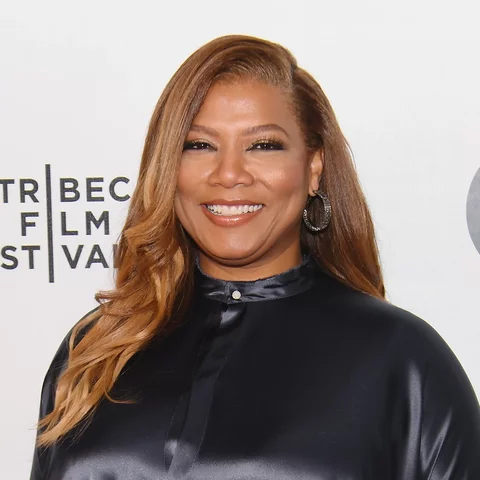 Queen Latifah appeared on the rap scene with her first release, "All Hail the Queen" in 1989. The track "Ladies First" off that album and later, "U.N.I.T.Y." put her in the forefront of Black feminist figures. She has remained active in the entertainment industry moving on to television and cinema
Queen Latifah appeared on the rap scene with her first release, "All Hail the Queen" in 1989. The track "Ladies First" off that album and later, "U.N.I.T.Y." put her in the forefront of Black feminist figures. She has remained active in the entertainment industry moving on to television and cinema -
 Vanilla Ice represents everything wrong with the music industry. His name, 33 years after "Ice Ice Baby," is still synonymous with the term "poseur" (or, "poser"). This page lists him as "the punchline," and I'm not sure they're wrong.
Vanilla Ice represents everything wrong with the music industry. His name, 33 years after "Ice Ice Baby," is still synonymous with the term "poseur" (or, "poser"). This page lists him as "the punchline," and I'm not sure they're wrong. -
 Tupac Shakur's first song is released as part of his work with Digital Underground. Even with his limited time in the music industry due to his untimely death, Tupac sent hip hop in new, more complex trajectories than it had headed on prior to his arrival. While not free from misogynist lyrics, he spoke openly of his respect and love of women, introducing a feminist awareness into male rap. He also problematized the gangsta life by humanizing criminal acts.
Tupac Shakur's first song is released as part of his work with Digital Underground. Even with his limited time in the music industry due to his untimely death, Tupac sent hip hop in new, more complex trajectories than it had headed on prior to his arrival. While not free from misogynist lyrics, he spoke openly of his respect and love of women, introducing a feminist awareness into male rap. He also problematized the gangsta life by humanizing criminal acts. -
 In 1994, the [Notorious B.I.G.](biography.com/musicians/biggie-smalls) released his first of only two studio albums, "Ready to Die." He was a representative of East Coast Rap, and carried a "gangsta swag" in his life and music. Rolling Stone has called him the best rapper that ever lived. Many of his songs were autobiographical or semi-biographical.
In 1994, the [Notorious B.I.G.](biography.com/musicians/biggie-smalls) released his first of only two studio albums, "Ready to Die." He was a representative of East Coast Rap, and carried a "gangsta swag" in his life and music. Rolling Stone has called him the best rapper that ever lived. Many of his songs were autobiographical or semi-biographical. -
 Jay-Z is the first hip hop billionaire. He entered the music industry in the late '80's and released his first solo album in 1996 (Reasonable Doubt). His influence cannot be overstated. With 24 Grammys (more than any other rapper, but still 8 behind his wife, Beyoncé), clothing and champagne line, a record label... he looks to remain a solid influence in hip hop for a long time to come.
Jay-Z is the first hip hop billionaire. He entered the music industry in the late '80's and released his first solo album in 1996 (Reasonable Doubt). His influence cannot be overstated. With 24 Grammys (more than any other rapper, but still 8 behind his wife, Beyoncé), clothing and champagne line, a record label... he looks to remain a solid influence in hip hop for a long time to come. -
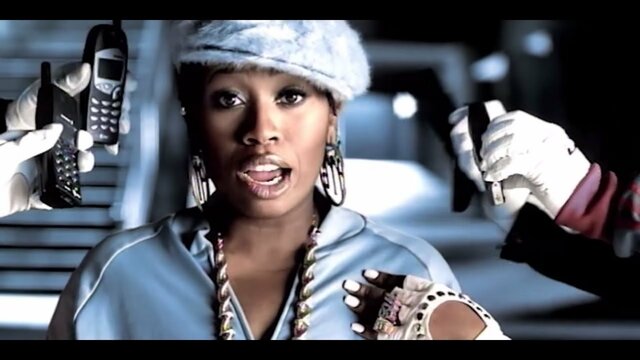 Missy "Misdemeanor" Elliott entered the music industry in 1991, in R&B groups and collaborating with other musicians on their work. In 1997 she released her first studio album, "Supa Dupa Fly" which went platinum. She has four Grammy's, and at 40 million records sold worldwide, Nielson calls her the best selling female rapper of all time.
Missy "Misdemeanor" Elliott entered the music industry in 1991, in R&B groups and collaborating with other musicians on their work. In 1997 she released her first studio album, "Supa Dupa Fly" which went platinum. She has four Grammy's, and at 40 million records sold worldwide, Nielson calls her the best selling female rapper of all time. -
 Lauryn Hill is one of the greatest minds in hip hop and rap. She is widely recognized as one of the best rappers. Her solo album "The Miseducation of Lauryn Hill" being certified diamond. She blends hip hop, R&B, neo-soul and reggae. She is the founder of legendary hip hop group The Fugees. Some have credited her with reviving hip hop after the deaths of Tupac and Biggie.
Lauryn Hill is one of the greatest minds in hip hop and rap. She is widely recognized as one of the best rappers. Her solo album "The Miseducation of Lauryn Hill" being certified diamond. She blends hip hop, R&B, neo-soul and reggae. She is the founder of legendary hip hop group The Fugees. Some have credited her with reviving hip hop after the deaths of Tupac and Biggie. -
 Sean Combs (a.k.a, Puff Daddy, a.k.a, P. Diddy, a.k.a, Diddy, a.k.a, Puffy) is a hip hop mogul, initially known as a talent director and the founder of Bad Boy Records. His rap career began in earnest with the 1997 release of his studio album, "No Way Out," which won a Grammy and sold 7 million copies
Sean Combs (a.k.a, Puff Daddy, a.k.a, P. Diddy, a.k.a, Diddy, a.k.a, Puffy) is a hip hop mogul, initially known as a talent director and the founder of Bad Boy Records. His rap career began in earnest with the 1997 release of his studio album, "No Way Out," which won a Grammy and sold 7 million copies -
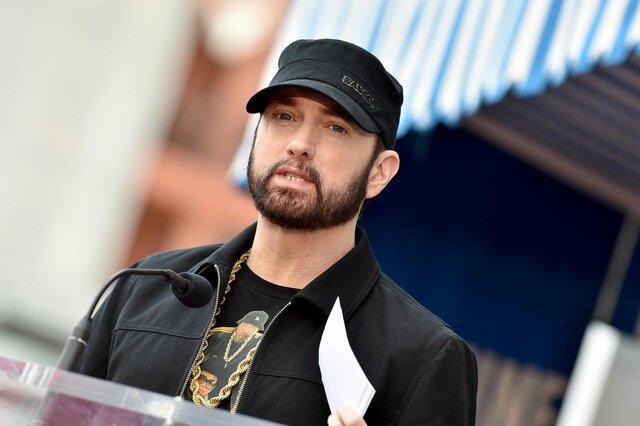 Eminem is a very talented American rapper and producer. Like Jay-Z, he is a rags-to-riches U.S. success story. While present in the music industry in various ways since 1988, it was his 1999 "Slim Shady" LP that truly launched his career.
Eminem is a very talented American rapper and producer. Like Jay-Z, he is a rags-to-riches U.S. success story. While present in the music industry in various ways since 1988, it was his 1999 "Slim Shady" LP that truly launched his career. -
Talib Kweli is among those artists we do not have time to study, but who deserves mention on this timeline. Aside from his clear talents, Talib Kweli is an outspoken activist fighting against racism, and police brutality.
-
 Despite much controversy, Kanye West's influence in hip hop as a rapper, producer, and fashion designer can't be denied. His first studio album, "College Dropout" was well-received among fans and critics alike, going triple-platinum. While his political and social views have dominated news of him in recent years, his impact on hip hop can't be overlooked.
Despite much controversy, Kanye West's influence in hip hop as a rapper, producer, and fashion designer can't be denied. His first studio album, "College Dropout" was well-received among fans and critics alike, going triple-platinum. While his political and social views have dominated news of him in recent years, his impact on hip hop can't be overlooked. -
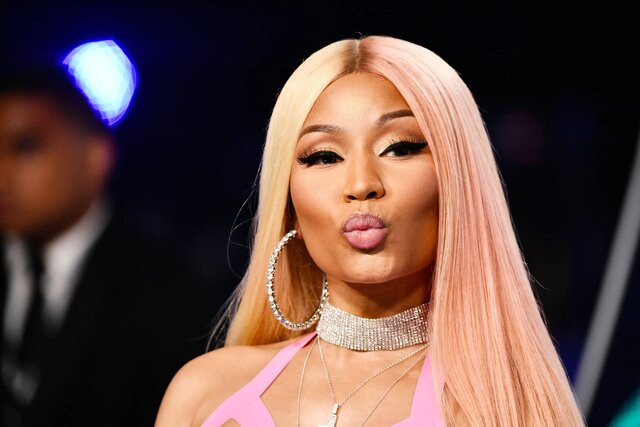 Among those that we won't study formally, but is worthy to note, Nicki Minaj has released four studio albums, the first in 2010, and has a fifth album due later this year.
Among those that we won't study formally, but is worthy to note, Nicki Minaj has released four studio albums, the first in 2010, and has a fifth album due later this year. -
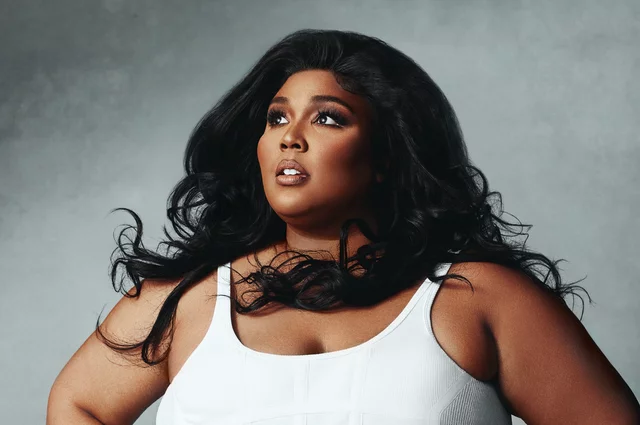 Among other talented hip hop artists we won't get a chance to study formally, Lizzo deserves a shout-out. Coming on scene with two studio albums in 2013 and 2015, she has been outspoken about body-positivity, mental health, and actively including the LGBTQ+ community.
Among other talented hip hop artists we won't get a chance to study formally, Lizzo deserves a shout-out. Coming on scene with two studio albums in 2013 and 2015, she has been outspoken about body-positivity, mental health, and actively including the LGBTQ+ community. -
 For only having one studio album, Cardi B's influence is outsized. She is omnipresent in the music industry in the 2020's appearing on multiple television programs, earning more accolades than I care to count and representing, loudly and proudly as a bisexual Afro-Latine and Afro-Caribbean woman. While she's not someone we focus on, she's someone to know!
For only having one studio album, Cardi B's influence is outsized. She is omnipresent in the music industry in the 2020's appearing on multiple television programs, earning more accolades than I care to count and representing, loudly and proudly as a bisexual Afro-Latine and Afro-Caribbean woman. While she's not someone we focus on, she's someone to know! -
 While only releasing her first studio album in 2020, Megan Thee Stallion has been using her talents, her sex-positive approach and confidence to influence the musical industry. Openly bisexual and not shy about using her sexuality to drive her image, she is changing attitudes about how women, black women in particular, can express their own desires.
While only releasing her first studio album in 2020, Megan Thee Stallion has been using her talents, her sex-positive approach and confidence to influence the musical industry. Openly bisexual and not shy about using her sexuality to drive her image, she is changing attitudes about how women, black women in particular, can express their own desires. -
 In 2021, PrepScholar published their own Complete History of Hip Hop
In 2021, PrepScholar published their own Complete History of Hip Hop -
 The U.S. Coast Guard Academy begins offering a Cultural Perspectives course based on the origins of U.S. & Global hip hop.
The U.S. Coast Guard Academy begins offering a Cultural Perspectives course based on the origins of U.S. & Global hip hop.




